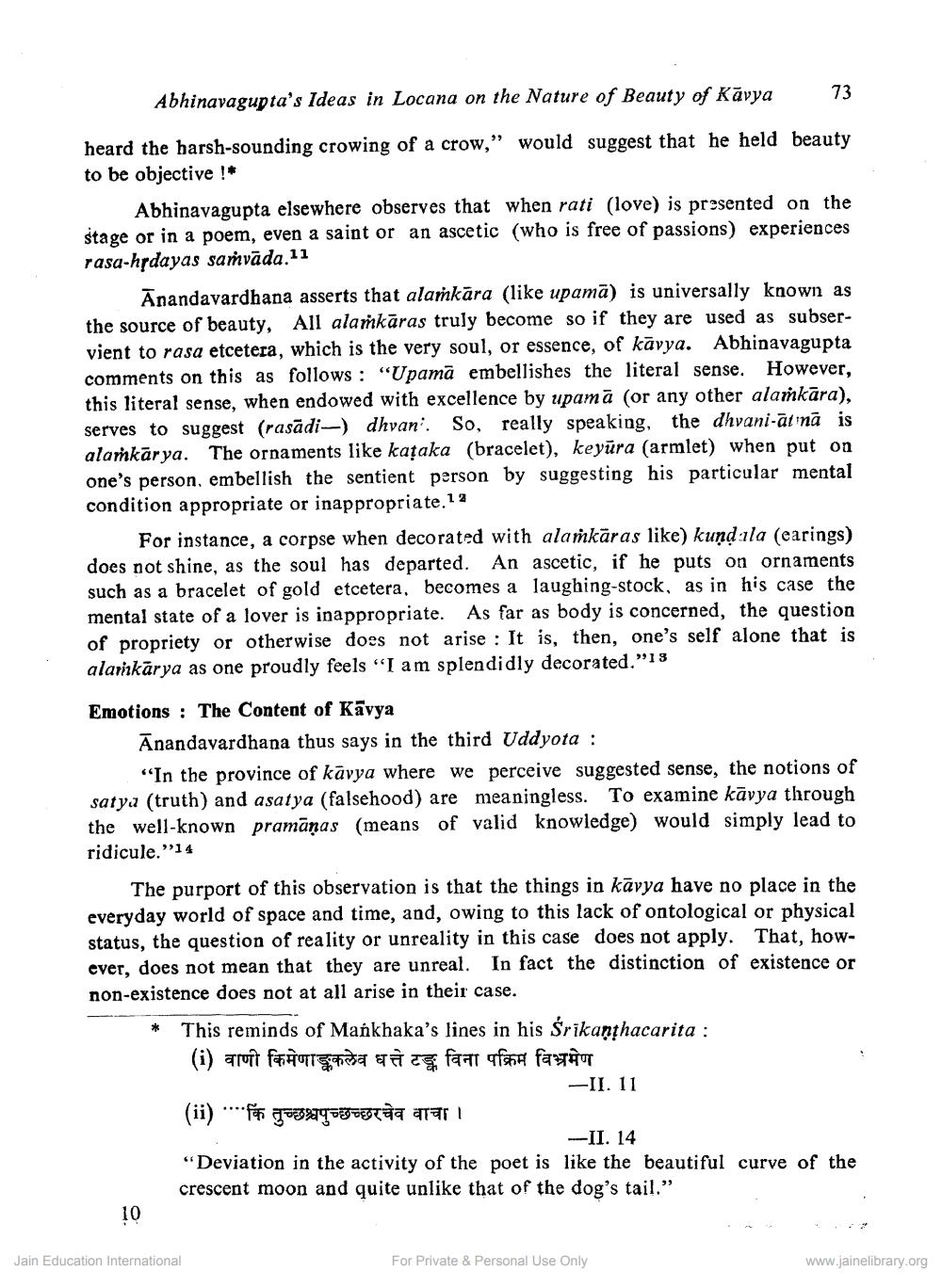________________
Abhinavagupta's Ideas in Locana on the Nature of Beauty of Kāvya
73
heard the harsh-sounding crowing of a crow," would suggest that he held beauty to be objective !*
Abhinavagupta elsewhere observes that when rati (love) is presented on the stage or in a poem, even a saint or an ascetic (who is free of passions) experiences rasa-hrdayas savāda.11
Ānandavardhana asserts that alamkāra (like upamā) is universally known as the source of beauty, All alamkāras truly become so if they are used as subservient to rasa etcetera, which is the very soul, or essence, of kāvya. Abhinavagupta comments on this as follows : “Upamā embellishes the literal sense. However, this literal sense, when endowed with excellence by upamā (or any other alamkāra), serves to suggest (rasādi--) dhvan. So, really speaking, the dhvani-ātinā is alamkārya. The ornaments like kataka (bracelet), keyūra (armlet) when put on one's person, embellish the sentient person by suggesting his particular mental condition appropriate or inappropriate. 1 2
For instance, a corpse when decorated with alamkāras like) kund:la (earings) does not shine, as the soul has departed. An ascetic, if he puts on ornaments such as a bracelet of gold etcetera, becomes a laughing-stock, as in his case the mental state of a lover is inappropriate. As far as body is concerned, the question of propriety or otherwise does not arise : It is, then, one's self alone that is alarmkārya as one proudly feels “I am splendidly decorated."13
Emotions : The Content of Kavya
Ānandavardhana thus says in the third Uddyota :
“In the province of kavya where we perceive suggested sense, the notions of satya (truth) and asatya (falsehood) are meaningless. To examine kāvya through the well-known pramāņas (means of valid knowledge) would simply lead to ridicule.”14
The purport of this observation is that the things in kāvya have no place in the everyday world of space and time, and, owing to this lack of ontological or physical status, the question of reality or unreality in this case does not apply. That, however, does not mean that they are unreal. In fact the distinction of existence or non-existence does not at all arise in their case.
* This reminds of Mańkhaka's lines in his Srikanthacarita : (i) वाणी किमणाङ्कलेव धत्ते टड विना पक्रिम विभ्रमण
-II. 11 (ii) **** ffi IF741=ogha atar
-II. 14 “Deviation in the activity of the poet is like the beautiful curve of the
crescent moon and quite unlike that of the dog's tail.” 10
Jain Education International
For Private & Personal Use Only
www.jainelibrary.org




